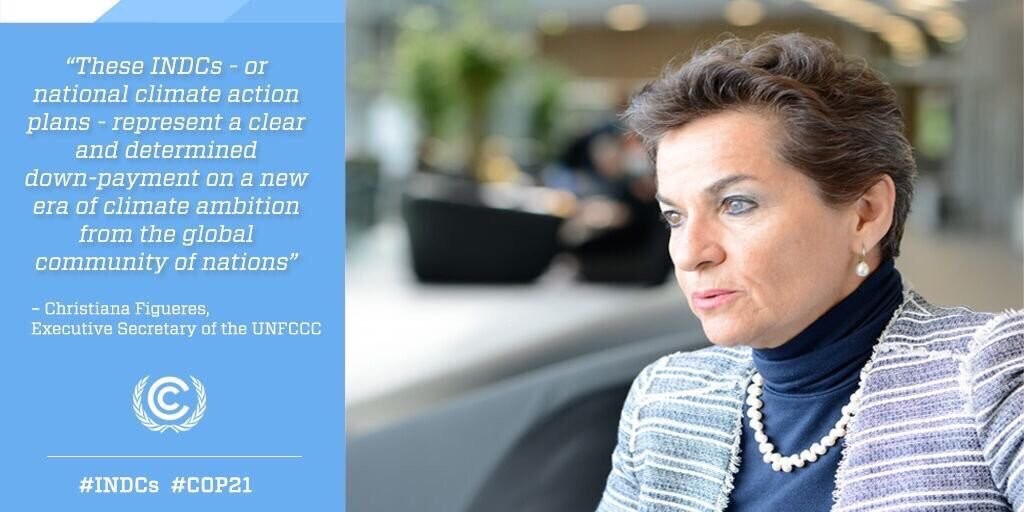The synthesis report on the aggregate effect of the INDCs
A report released by the UNFCCC secretariat assessed the collective impact of 119 separate INDCs from 147 Parties to the UNFCCC[1]. The final full document “Synthesis report on the aggregate effect of the intended nationally determined contributions” can be accessed here. The report notes that if fully implemented, these plans can significantly reduce the growth of greenhouse gas emissions in the coming decades. While efforts represented in these plans do not fall within cost-optimal trajectories to keep temperature rise below 2C above preindustrial levels, they provide a solid foundation for even more ambitious action in the near future.
The report includes all developed nations and three quarters of developing countries under the UNFCCC, covering 86 % of global greenhouse gas emissions.
Key elements
- Parties have submitted their INDCs with the understanding that they would be anchored in a broader new climate agreement that would support sustainable actions nationally and globally.
- The INDCs indicate a significant increase in the number of countries taking climate action, which is often national in scope and covers a large number of sectors and greenhouse gases.
- INDCs are expected to deliver sizeable emission reductions and slow down emissions growth in the coming decade. They will, however, not be sufficient to reverse by 2025 and 2030 the upward trend of global emissions.
- The extent to which the collective objective to limiting the global average temperature rise to less than 2 °C depends on the estimated emission reductions before and after 2030 and also the long-term changes in key social, economic and technology drivers that will be catalyzed by the implementation of the INDCs.
- National processes to prepare the INDCs helped place climate change high on the political agenda and created a new and significant momentum for action.
- In their adaptation components Parties provide a representative overview of how they intend to address adaptation and loss and damage at the national level in the next decades.
The INDCs and Paris: long-term goals
The new climate change agreement to be agreed in Paris can recognize the INDCs’ efforts and needs to scale up the national ambitions, and to mobilize climate finance and other forms of multilateral cooperation, even before 2030.
[1] The EU, a single Party, represents 28 countries
Source: NAMA News | 13 November 2015














